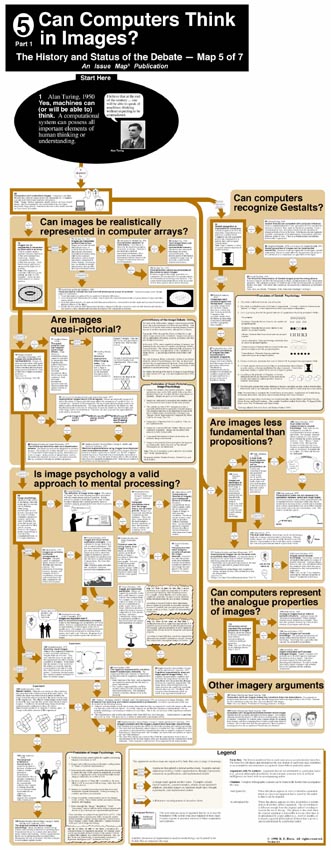No: computers can't understand images [5b]
Computers can't think because they can't use images in the way that people do. Computers can only deal with formal symbolic information.

A full-sized version of the original can be ordered here.
The questions explored on
Map 5b – Can computers think in images? are:
- Can images be realistically represented in computer arrays?
- Can computers represent the analogue properties of images?
- Can computers recognize Gestalts?
- Are images less fundamental than propositions?
- Is image psychology a valid approach to mental processing?
- Are images quasi-pictorial representations?
- Other imagery arguments
 Note
Note
Note: 'Image' in these arguments usually refers to an "eye-closed" image, which is imagined in one's mind without the real object necessarily being present. Sometimes, the term is also used to describe an "eyes-open" perception.